NGC 4349 is an intermediately aged open cluster that is located approximately 7000 light years away from Earth. This open cluster is found in a Southern constellation named Crux and was discovered by Scottish astronomer James Dunlop in 1826. This cluster is known to be significantly more visible when viewed from the southern hemisphere, which helped determine the location of this cluster. Open clusters like NGC 4349 are very important for modern-day scientists and researchers to further the understanding of how stars develop and evolve and grasp a detailed understanding of the various characteristics of stars within a cluster. By doing an in-depth analysis of the intermediate open cluster NGC 4349, I was able to see these developments over time. My analysis consisted of me collecting 15 total images via Skynet observatory and making use of three different filters them being B, V, and R. Depending on the filter used at the time the exposure time would vary when taking these images. When the B filter was used an exposure time of 81 seconds was used, when the V filter was used, an exposure time of 36 seconds was used and lastly, when the R filter was used an exposure time of 21 seconds was used. The images were all obtained at the time of March 4, 2024, and were done using the PROMPT-MO-1 telescope. Once clear images were obtained, Afterglow was used to stack and align images and also make use of the batch photometry tool to generate CSV files of required data for analysis. Also, Afterglow was then used to apply colors to our obtained image to differentiate brighter stars from dimmer stars.
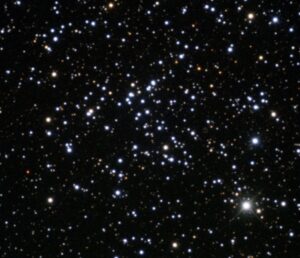
By making use of the obtained data CSV file from Afterglow, this can now be imported into a Cluster Astromancer site. This site allows us to generate multiple different isochrone models that show user data compared with cataloged data. In doing this, we can obtain information about a cluster’s age, metallicity, distance, and proper motion. Using four different models leads to more accuracy in determining an accurate placement of the model and obtaining accurate measurements.
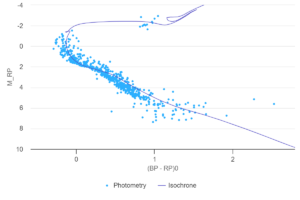
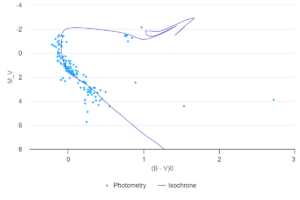
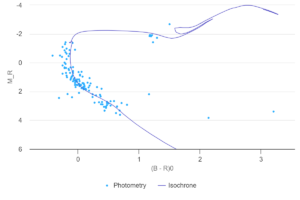
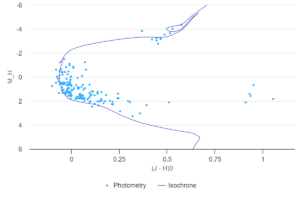
When looking at the constructed graphs, an observer can make out and learn how the stars within the NGC 4349 cluster have changed over a specified period of time. These models allow us to generate estimates of properties of this cluster which can be used for further analysis and comparison. Also, the models can be used to see how the population of stars within the cluster was distributed. By analyzing this distribution, we can make out the main sequence stars within the model, and we also can see that the graph shows multiple stars that are trailing to the right of the main sequence, indicating there may be giants or red and brown dwarfs within the cluster. In doing this analysis, we learn the various characteristics of this cluster and how it has changed over time. By knowing this, we can compare these patterns with other clusters and search for common relationships. Thus, we can gain a better understanding of the functionality of differently aged clusters and their overall effect on the universe itself.
By using the estimated parameters obtained from the individual analysis, can now compare these with the measurements in the Milky Way Star Clusters Catalog (MWSC) By, using these parameters, we generate the given graphs:
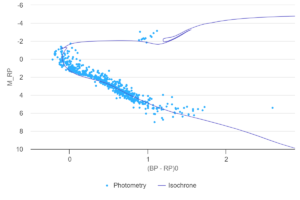
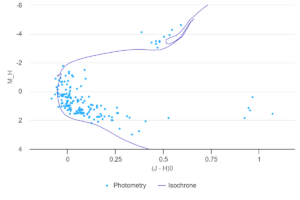
By comparing the individual and generated data, we see that these various models indeed share lots of similarities, indicating that the individually obtained data was accurate. However, the MWSC seems to struggle to pass through the majority of stars within the main sequence, whereas the graph I created seems to do a better job of this.
Having completed an in-depth analysis of the intermediately aged open cluster NGC 4349, I was able to develop an understanding of how clusters work and what details we can gain from analyzing this. However, due to a lack of information, it was difficult to obtain some background knowledge of the cluster itself, making it somewhat difficult initially to conduct the analysis. However, as the universe continues to change and develop each day, I’m sure more information will be obtained for thousands of clusters, including NGC 4349.